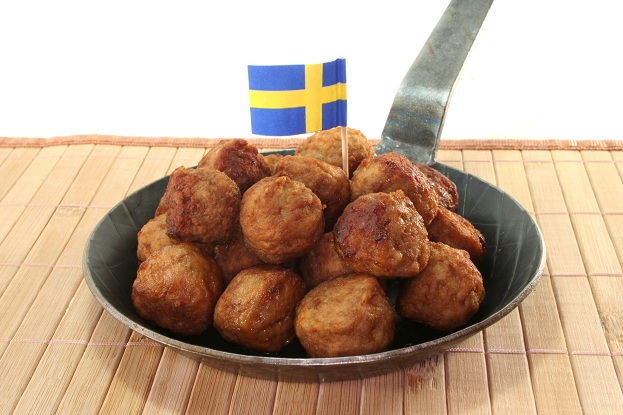As a result of its long, cold winters, traditional Swedish dishes don’t usually contain a lot of vegetables. To find out what makes a Swedish dish such a special culinary experience, read our guide for more facts & information…
Swedish dishes are generally known to be filling and practical rather than exotic. Swedes are very health conscious, and the food they eat reflects this fact. They love their dairy foods and different types of bread. Popular vegetables are kale, cabbage and potato. Beef and pork are highly popular, as are seafood dishes.
On the whole, Swedish food is fairly plain. They don’t cook with a lot of spices, although they have a quite unique cooking style. The spices that they do use add a special flavor to their dishes, which has created quite a reputation for their food internationally.
Swedes as a rule eat 3 meals a day. Breakfast (Frukost in Swedish), Lunch (middag) and supper. Historically supper used to be the main meal, but more and more Swedes nowadays eat their main meal during lunchtime, followed by a light evening meal.
Humaniskost – Typical Swedish Food
Humaniskost is a range of typical Swedish dishes. The ingredients are varied. It can include fish, pork, potatoes or other root vegetables, milk, cereals, onion, cabbage and apple.
Some typical Humaniskost dishes include: Pea soup (Artsoppa), pork with mashed carrots and potatoes (Rotmos med Flask), blood sausage (blodpudding), boiled salmon (Inkokt Lax), pickled herring (Inlagd sill), rye crackers that are eaten with cold meats or cheese for breakfast (Knäckebröd), meatballs (Kottbullar) and meat and onion stew (Kalops).
Smorgasbord – a Traditional Swedish Meal
Nowadays most of us are familiar with buffet meals. The Swedes, however, started this tradition, which consists of an assortment of foods starting with herring or smoked eel or salmon etc with bread and butter; then cheeses and eggs and pickled vegetables and aspics; finally hot foods; served as a buffet meal.
Meatballs, pancakes and other Humaniskkost dishes usually form part of a Smorgasbord meal. Dessert is sometimes included, but this is optional. Most Swedes nowadays only serve a smorgasbord on special occasions, such as New Year, Christmas or during Swedish festivals.
Desserts and Jams
There’s a wide variety of berries to be found in Sweden and Swedes use this fact to their advantage by preparing a whole range of berry jams. When it comes to desserts, they don’t have to stand back for anyone. Many of their desserts are delicious creations.
Some of their better known desserts are:
Knäck – a delicious toffee widely eaten during Christmas time
Ostkaka – a cake with curdled milk or cottage cheese added for flavor. Served with whipped cream and jam, or fruit and ice cream
Spettekaka – a unique hollow cake prepared on a skewer over an open fire. It’s usually served with port wine, strong coffee and ice cream.





